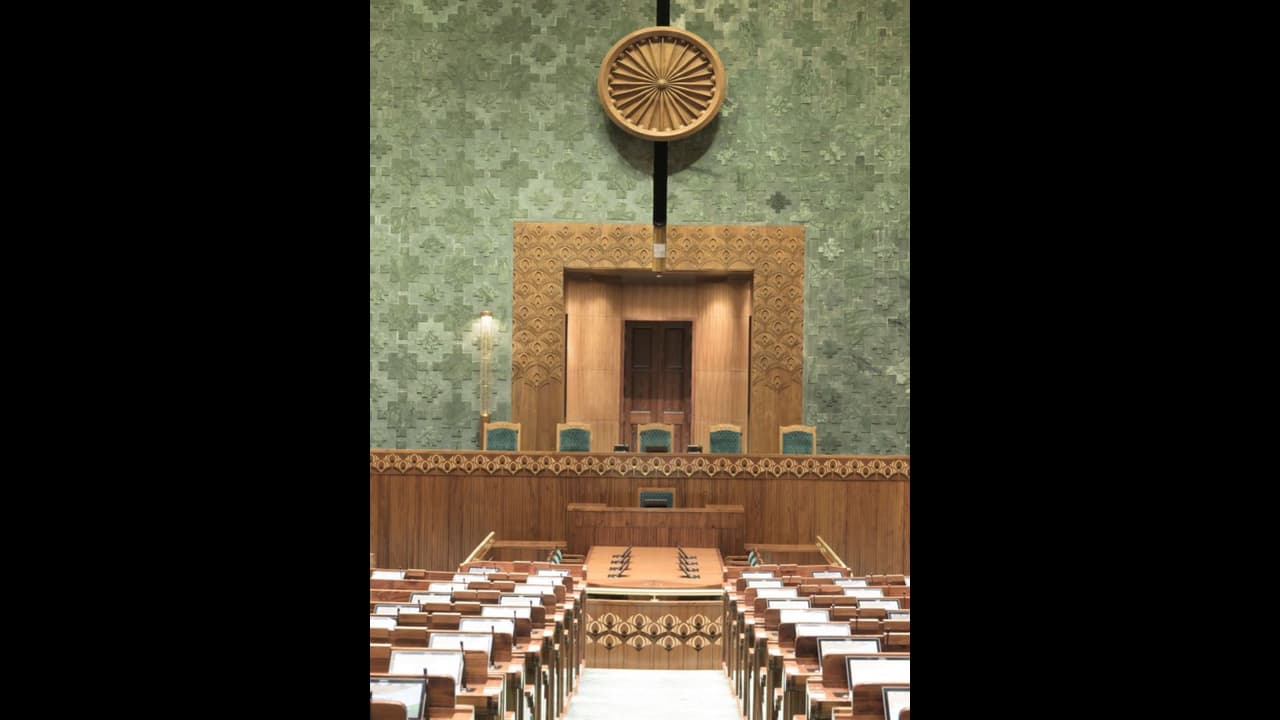There are estimated to be around 5000 pieces of artwork that are being showcased in the new Parliament. These include sculptures, paintings and wall panels.
The new Parliament building, which was unveiled by Prime Minister Narendra Modi on Sunday reflects the country's cultural and artistic diversity. There are estimated to be around 5000 pieces of artwork that are being showcased in the new Parliament. These include sculptures, paintings and wall panels.

According to officials familiar with the matter, these installations are exhibited at a total of six ceremonial entrances and public access ways, including the galleries of the Lok Sabha and Rajya Sabha.
The Constitution Hall, which has a digitised copy of the Indian Constitution, has a touch of modernity as it also houses a Foucault's Pendulum to demonstrate the rotation of the earth. Foucault's Pendulum hangs from a large skylight from the triangular roof of the Constitution Hall and signifies the idea of India with that of the universe.

\
The official further said that each piece of artwork narrates countless stories. Artists from all over the country have collaborated to breathe life into these tales.
These installations will highlight animals that hold reverence in different regions of the country, namely the Garud (eagle), Gaj (elephant), Ashva (horse), and Maggar (crocodile), the officials disclosed.
Each of the entrances has 'a guardian statue of an auspicious animal' which has been selected on the basis of their significance in vaastu shastra, culture, and qualities like power and wisdom.
Positioned at the ceremonial entrance to the north, the gaj (elephant) symbolizes wisdom, wealth, intelligence, and memory. According to Vaastu Shastra, the north direction is associated with Mercury, the source of profound wisdom.
Standing watch at the southern gate is the Ashwa (horse), representing qualities of endurance, strength, power, and speed often associated with kingship. The Garuda (eagle), guarding the eastern gate, embodies the aspirations of the people. In Vastu Shastra, the east is linked to the rising sun, symbolizing success.
Additionally, positioned at the entrance on the northeastern side is the hamsa (swan), representing caution and wisdom. The remaining entrances feature Makara, a legendary aquatic monster composed of various animal parts, symbolizing harmony in diversity, and Shardula, a mythological creature believed to be the most powerful of all beings, representing the strength of the nation's citizens.
The adornment and design of the building involved the collaborative efforts of over a thousand skilled craftsmen and artists. It has been emphasized that all the artworks have been specially commissioned.
While the Parliament is intended to belong to the people of the country and reflect their aspirations, an endeavour was made to include indigenous and grassroots artists from all corners of the nation. The artefacts will embody the Indian identity and ethos, encompassing both culture and civilization.
The building has three ceremonial foyers where huge brass images of Mahatma Gandhi, Chanakya, Gargi, Sardar Vallabhbhai Patel, B R Ambedkar, and the Chariot Wheel from the Sun Temple at Konark are on display.
The public entrances lead to three galleries -- the Sangeet Gallery which exhibits dance, song, and musical traditions of India; the Sthapthya Gallery depicts the architectural heritage of the country and the Shilp Gallery showcases distinct handicraft traditions of different states.
The interiors of the Lok Sabha chamber are based on the theme of the national bird peacock, while that of the Rajya Sabha depicts the national flower lotus.
According to officials, eminent musicians and their family members including Ustad Amjad Ali Khan, Pandit Hariprasad Chaurasia, Ustad Bismillah Khan, Pandit Ravi Shankar have donated their musical instruments to the Sangeet Gallery.
The materials for the Ashoka Emblem were sourced from Aurangabad in Maharashtra and Jaipur in Rajasthan, while the Ashok Chakra on the massive walls of the Lok Sabha and the Rajya Sabha chambers and the exteriors of the parliament building was procured from Indore in Madhya Pradesh.

